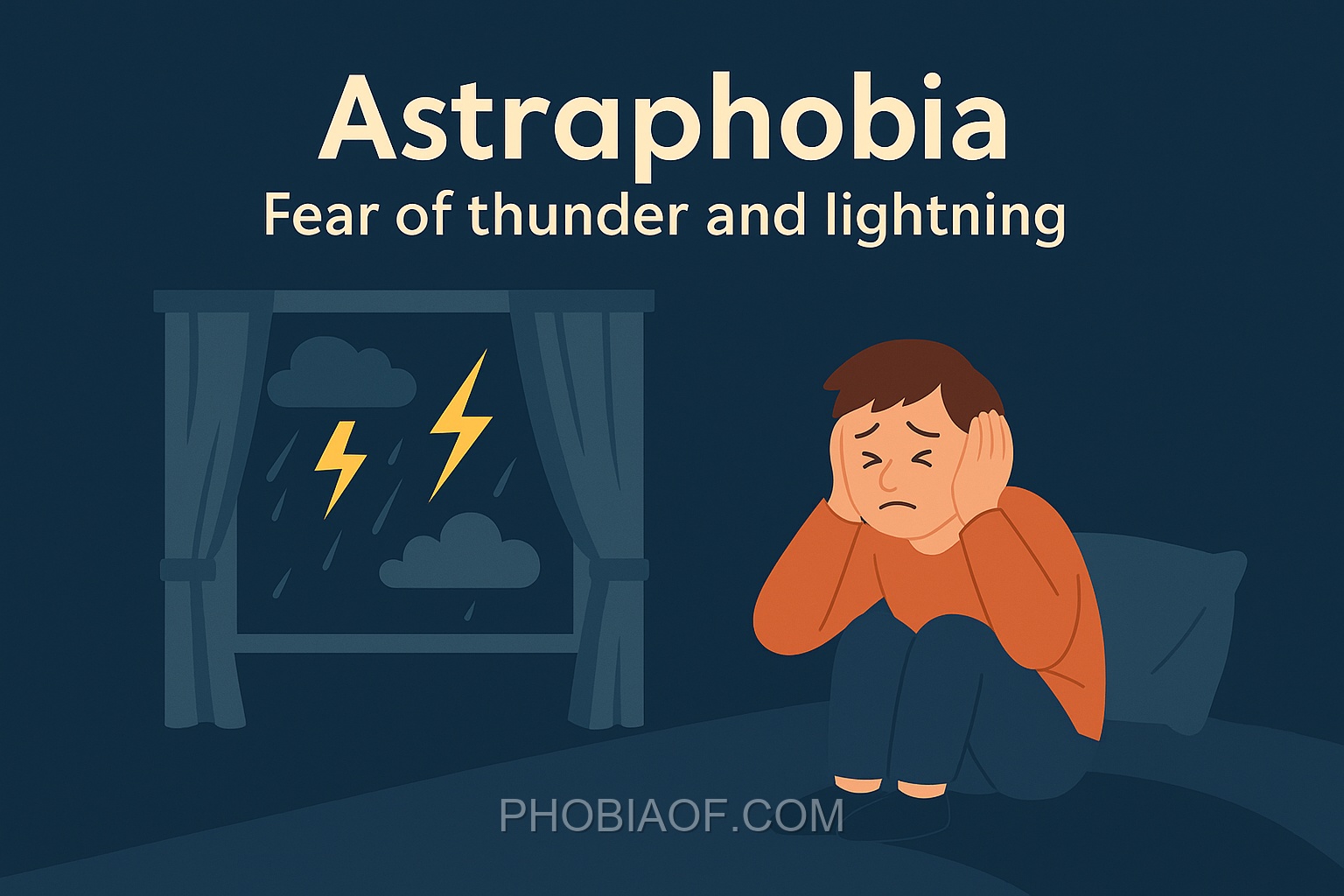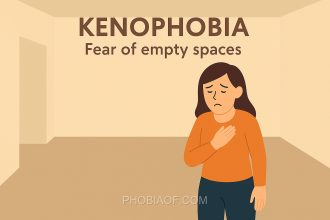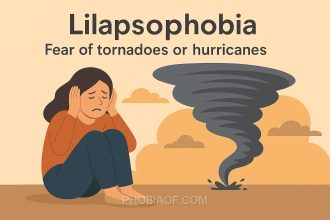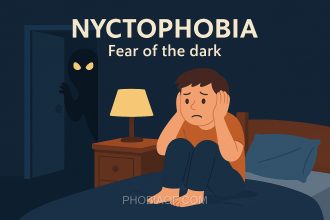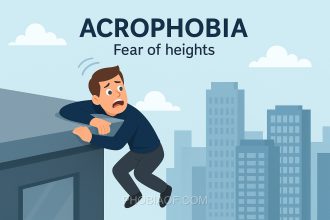Have you ever found yourself anxiously counting the seconds between a flash of lightning and the boom of thunder? If so, you’re not alone. This reaction is part of a natural human instinct, but for some, it escalates into a condition known as Astraphobia.
Astraphobia is the intense fear of thunder and lightning. The term is derived from the Greek words “astrape,” meaning lightning, and “phobos,” meaning fear. While it’s common to feel uneasy during a storm, astraphobia can cause overwhelming distress, affecting a person’s daily life and mental well-being.
Individuals with astraphobia may experience a range of symptoms, including:
- Increased heart rate
- Trembling or shaking
- Panic attacks
- An overwhelming urge to hide or seek shelter
- Avoidance of situations where a storm might occur
This phobia can affect people of all ages, though it is particularly prevalent in children. With understanding and appropriate strategies, those affected can learn to manage their fear and reduce its impact on their lives. Astraphobia, like any other phobia, is a valid emotional experience and recognizing it is the first step towards finding support and coping mechanisms.
Causes of Astraphobia
Astraphobia, the intense fear of thunder and lightning, can develop due to a variety of causes. Understanding these causes can help in addressing the phobia effectively. Here are some of the common reasons why someone might develop astraphobia:
- Genetic Predisposition:
Some individuals may have a genetic predisposition to anxiety disorders, which can increase the likelihood of developing specific phobias like astraphobia. If a family member has experienced similar fears or anxiety issues, there might be an inherited component at play.
- Traumatic Experiences:
Experiencing a traumatic event involving a storm, such as being caught in severe weather conditions or witnessing storm-related destruction, can lead to the onset of astraphobia. Such experiences can leave a lasting impression, triggering fear whenever thunder or lightning occurs.
- Learned Behavior from Others:
Observing someone else’s fearful reaction to storms, especially during childhood, can lead to the development of astraphobia. Children often mimic the behaviors of adults or peers, so witnessing a parent or sibling exhibiting fear can instill similar fears in them.
- Environmental Factors:
Living in an area prone to severe thunderstorms can heighten the fear of such weather events. The frequency and intensity of storms in certain regions can reinforce the phobia over time.
- Psychological Factors:
Individuals with high levels of anxiety or other existing phobias may be more susceptible to developing astraphobia. Anxiety can amplify the perception of danger, making natural occurrences like thunderstorms seem more threatening.
Some interesting theories suggest that astraphobia might also have evolutionary roots. Thunderstorms, with their loud noises and sudden flashes, could have posed real threats to early humans, and a heightened sensitivity to such dangers might have been advantageous for survival. This ancestral memory might still influence some people’s fear responses today.
Overall, while the causes of astraphobia can vary widely, understanding these potential origins can be a crucial step in addressing and managing the fear effectively.
Symptoms of Astraphobia
Astraphobia, the intense fear of thunder and lightning, can cause significant distress for those affected. When a storm approaches, individuals with this phobia may experience severe anxiety and dread. The symptoms can be both physical and emotional, manifesting in various ways:
- Intense Fear or Anxiety: Overwhelming fear when thinking about or experiencing a thunderstorm.
- Panic Attacks: Sudden episodes of intense fear that may include chest pain, trembling, or a feeling of loss of control.
- Sweating: Excessive perspiration, even in cool or calm environments, when anticipating a storm.
- Rapid Heartbeat: A noticeable increase in heart rate when a storm is approaching or occurring.
- Shortness of Breath: Difficulty breathing, which can escalate feelings of panic.
- Avoidance of Triggers: Actively avoiding situations where thunder or lightning might occur, such as staying indoors or refusing to travel during certain seasons.
- Overwhelming Dread: A persistent sense of impending doom or extreme worry about storms, even when they are not imminent.
- Inability to Focus: Difficulty concentrating on tasks due to preoccupation with fear of storms.
- Seeking Reassurance: Frequently asking others for comfort or updates about weather conditions.
When astraphobia is severe, these symptoms can significantly interfere with daily life, affecting one’s ability to work, socialize, or engage in routine activities.
Treatment for Fear of Thunder and Lightning
Dealing with a fear of thunder and lightning, known as Astraphobia, can be challenging, but it’s important to know that this phobia can be treated and managed over time. With the right approach, you can overcome your fears and regain control over how you respond to storms. Let’s explore some proven therapies and coping strategies that can help you on this journey.
Therapies for Astraphobia
Several therapeutic approaches have been shown to be effective in treating Astraphobia:
- Exposure Therapy: This therapy involves gradually and systematically facing your fear in a controlled environment. By slowly increasing your exposure to the source of your fear – in this case, thunder and lightning – you can desensitize yourself and reduce your anxiety response over time.
- Cognitive-Behavioral Therapy (CBT): CBT is designed to help you identify and change the fearful thoughts and beliefs that contribute to your phobia. By restructuring these thoughts, you can alter your emotional response and develop healthier coping mechanisms.
- Counseling: Speaking with a trained counselor can provide you with support and guidance as you work through your fear. Counseling can help you explore the root causes of your phobia and develop strategies for managing your anxiety.
Self-Help Coping Techniques
In addition to professional therapy, there are several self-help techniques you can use to complement your treatment:
- Relaxation Exercises: Practices such as deep breathing, progressive muscle relaxation, and guided imagery can help calm your mind and body during a storm.
- Meditation: Regular meditation can reduce overall anxiety levels and help you remain grounded during moments of fear.
- Support Groups: Joining a support group can connect you with others who understand what you’re going through, providing a sense of community and shared experience.
Additional Considerations
In some severe cases of Astraphobia, medication such as anti-anxiety medications might be prescribed by a healthcare professional. However, the primary focus should remain on therapeutic techniques and developing effective coping skills.
If your fear of thunder and lightning is interfering with your daily life, it’s important to seek professional help. A mental health professional can provide a comprehensive evaluation and tailor a treatment plan that meets your individual needs.
Remember, overcoming a phobia is a journey that takes time and patience. With the right support and strategies, you can successfully manage your fear and enjoy a more peaceful life.
Conclusion
Understanding the causes and symptoms of astraphobia is a crucial step in empowering oneself to effectively address this common fear. By recognizing the triggers and manifestations of astraphobia, individuals can better identify when to seek help and employ strategies to manage their anxiety. Knowledge is a powerful tool, and being informed about this phobia can significantly lessen its impact on daily life.
It’s important to remember that many people successfully overcome or manage their phobias with time, patience, and the right support. There are a variety of coping mechanisms and treatments available, ranging from cognitive-behavioral therapy to relaxation techniques, which have proven effective for countless individuals.
If you or someone you know is struggling with astraphobia, consider reaching out to a therapist or talking to a doctor for professional support. You are not alone, and with the right help, you can regain control and lead a fulfilling life, free from the limitations of fear. Embrace this journey with optimism and confidence, knowing that a brighter, more peaceful future is within reach.
